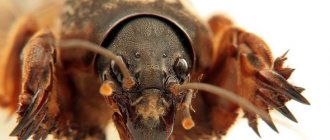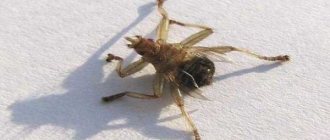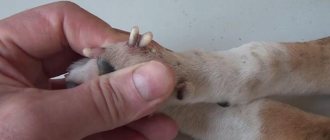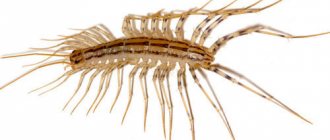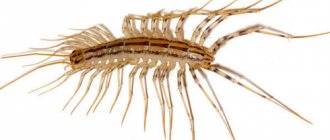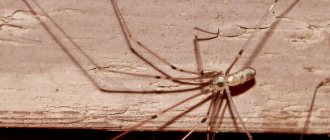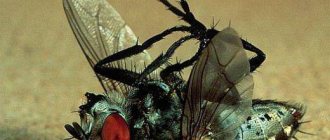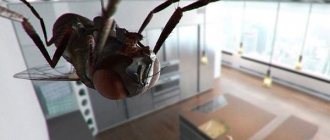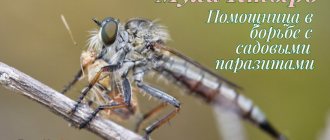Moose ticks are not actually ticks at all. This is a separate species of insects that belong to the order Diptera, not arachnids. The parasites got their name due to some external resemblance to ticks and their diet. They feed only on blood. Deer bloodsuckers have not yet been studied well enough, but entomological science still has some reliable facts about them.
- Deer bloodsuckers are viviparous insects.
- They lay a larva ready for pupation on the body of an elk or other ungulate, which feeds on its blood, and then falls to the ground and there develops to the adult stage.
- Due to the structure of the body, the moose tick is practically invulnerable to physical impact; it is very difficult to crush it with a slap of the palm, like a mosquito or fly.
- Since the parasite feeds on blood, it can most often be found in areas where the main source of food lives - wild and domestic ungulates.
- The pest can always be found on elk and deer.
- Bloodsuckers navigate by heat and smell and can attack several dozen individuals.
How to distinguish this pest from flies, ticks and other insects? Are bloodsuckers dangerous for humans and how to deal with them if they appear in an apartment or bother you in any open-air areas?
What does a deer bloodsucker (moose fly) look like?
Deer bloodsucker or moose fly, photo with wings
The size of the pest is 3-4 mm. It looks like a fly with a flattened body. It is due to its flattened shape that the parasite can withstand severe pressure from above. The covers are colored brown and have a glossy sheen. They are quite elastic and stretch significantly during feeding and during pregnancy. There are 3 legs extending from the chest on each side, there is a thickening on the hips, and claws are present. The wings are well developed, transparent, with a small number of veins, about 5.5-6 mm long.
The head of the moose fly is directed forward and flattened, like the body. The head of the bloodsucker is decorated with 2 eyes, located on the sides; they occupy a quarter of the entire head. The antennae are hidden in the frontal sockets, so they are almost invisible. The mouthparts are piercing-sucking type.
Description of appearance
This amazing creature resembles a flea, louse, tick, and fly. At a certain stage of development, there is a pair of transparent wings on the back, which reach a length of 6 mm. The insect uses them only to move upward, a short distance. Outwardly it looks like a fly, but after it gets on the host’s body, it sheds its wings and is more like a flea or tick.
The body is elongated, up to 3.5 mm in size. Shiny dark cover, flattened shape. A clearly visible head with pronounced large eyes. In addition to them, there are 3 more simple eyes on the head.
On a note!
Apart from its powerful paws, the creature resembles a flea. But, given the way the moose fly digs its claws into the skin, it looks more like a tick.
The body is flat with a durable chitinous cover. In a hungry state, the insect is very difficult to crush. As food arrives, as well as during pregnancy, the abdomen greatly increases in size.
The mouthparts of the moose fly are piercing-sucking, reminiscent of the structure of a burner fly. The proboscis has a row of hard chitinous bristles that act as teeth and help gnaw through the skin of warm-blooded animals. A photo of a moose fly is shown below. You can clearly see an amazing creature with different names.
moose fly
Reproduction of deer bloodsucker
Females produce several larvae during their lifetime. The deer bloodsucker has viviparity, i.e. she carries the egg to a pre-pupal state and only then gives birth to it. All the pupae need to do is harden and complete the pupal stage. At a time, the female lays only one prepupa, after which the next one begins to mature in the uterus.
The larvae mature in August-September. By mid-September, newborns are already growing wings. It is during this period that the greatest activity of deer bloodsuckers is observed. In general, in Russia, larvae hatch between August and October.
About nutrition and reproduction
Reproduction of the moose tick
Like its other relatives of the Hippoboscidae family, the moose flea has viviparity, and therefore the development of the egg and larvae continues in its womb. This process usually occurs at the end of September. After 2-3 days, very large (up to 4 mm) prepupae or puparia are born, which the female gives birth to at certain time intervals. After 2 days from the moment the uterus empties, the next larva enters it from the uterine-shaped expansion of the oviduct, which is born in a similar way. During her life, the female gives birth to about 20-30 puparia.
The body of the puparia does not grow, but only acquires a dark color and a hard surface. After which it falls to the ground, where it remains to spend the winter. The development of the future individual will continue only with the arrival of spring. The process of pupal formation takes almost the entire summer until August, resulting in the appearance of an elk tick with wings (a photo of a flying tick is presented below). In some areas of the Russian Federation, the appearance of adults is delayed until mid-October.
The newly-minted individual settles on a tree or bush, where it lies in wait for prey. When such a bloodsucker is detected, it clings to the animal’s fur, sheds its wings and, having reached the skin, begins to eat. After 15-20 days of active feeding, flies begin to show sexual dimorphism: their body darkens, their head becomes smaller, their abdomen grows, and their wing muscles atrophy. After which the adult individuals mate: having chosen a partner, the male clings tightly to her, subsequently continuing to live as a couple.
On a note!
About a month passes from the moment the winged individual emerges, after which the process of the appearance of puparia resumes. The wingless parasite lives on the host’s body for up to 6 months, so artiodactyls manage to get rid of bloodsuckers only by the beginning of summer.
Deer bloodsucker
Lifestyle of the deer bloodsucker
Deer bloodsuckers attack exclusively during the day; at night they sleep. Individuals of both sexes feed on blood. Moose flies usually attack artiodactyl animals belonging to the cervid family (elk, deer, roe deer, deer) and cattle. Less commonly they feed on the blood of wild animals, for example, the blood of bears, wolverines, wild boars, badgers, and foxes. In addition, deer bloodsuckers can attack goats, sheep, dogs and even people. The pest sometimes parasitizes forest birds.
Although the moose fly can attack a person and feed on his blood, it cannot complete its reproductive cycle and produce offspring.
Interestingly, when it gets on the skin, the parasite sheds its wings, breaking them off at the base, and is held on to the victim with the help of its paws, which cling to the hair. For this reason, it can easily be confused with a tick.
Despite the fact that the parasite has wings, it flies very poorly. The deer bloodsucker prefers to wait for prey, sitting in the grass.
Usually the parasite is attached to its host and rarely spreads to other individuals. However, if a bird of prey kills its prey, the bloodsuckers on it move to a new host.
Deer bloodsucker, side view
Moose fly, appearance
Deer bloodsucker on hand
How to get rid of elk ticks in the house or on the property
The moose bloodsucker lives in forests with a large number of wild animals. Also, these insects can settle in villages and summer cottages. Sometimes hunters bring their kill home, and with it a moose fly hidden in the thick fur. In this case, the person is at greater risk of being bitten.
There are several ways to combat moose ticks:
- treat the area with chemicals. It is better to do this with a steam generator, so all substances get into hard-to-reach places. But regular spraying will do. For treatment, you can use drugs such as Agravertin, Vertimek, Iskra, Inta-Vir);
- elk ticks usually wait in tall grass, so it is recommended to mow the area regularly;
- Regular watering of the lawn and trees also helps to get rid of and protect against bloodsuckers. For a better effect, you can add garlic juice, alcohol, and wormwood decoction to the water;
- plant wormwood and tansy on the site, as these plants repel ticks;
- the room is treated with carbon dioxide cooled to -500 C.
Regular mowing of grass in the area is a measure to prevent the appearance of bloodsuckers
How dangerous is the deer bloodsucker for humans and animals?
The pest prefers to feed on the blood of animals. It attacks people by chance when there are no deer, elk or wild animals nearby.
Deer bloodsucker attack on animals
The bloodsucker breeds on the body of large ungulates. The moose flies that parasitize the host are divided into pairs: the males are firmly attached to the females.
If a large population forms on the body of an animal, which continues to reproduce and regularly drinks blood, then the animal experiences serious discomfort, it stops eating and sleeping normally. Deer bloodsuckers feed 15-20 times a day, sucking 0.2-1.5 mg of blood at a time. As a result, some animals experience exhaustion, and young animals stop growing and developing. Regular blood loss in rare cases can lead to the death of the animal. Redness of the skin and papules appear at the sites of bites. The skin and fur of animals become heavily contaminated with parasite excrement.
The pest usually hides in the hair of ungulates on the neck and back, since these places have longer hair. Up to 1000 pests or even more can hide on one animal. The parasite feeds on the blood of the animal for 5-6 months.
Many types of bloodsuckers cause significant damage to animals. A pest that parasitizes sheep completely depletes the animal over several life cycles. As a result, the sheep develop skin inflammations and lose their wool.
Attack of a deer bloodsucker on a person
Deer bloodsucker (moose fly), appearance without wings
Although the moose fly will not specifically attack a person, it may well be a parasite on humans. Hunters are often attacked while cutting up their prey. In addition, a fly can attack a person in motion, because it reacts to movement and heat. Flies usually end up on people by mistake, so adults are more likely to be attacked than children.
The deer bloodsucker attacks unnoticed. Flying around a person, the parasite selects a landing site and then quickly sheds its wings. A person may think that he has brushed off an annoying fly, but after a few minutes the bloodsucker will dig into the skin. The bloodsucker rushes at people only in the absence of animals, simply confusing the victim. Pests often attack in a small flock.
Once on a person, the bloodsucker usually moves upward, trying to get into the hair or under clothing. A moose fly cannot be frightened by sudden movements, and it is not so easy to remove it. She doesn’t start biting immediately, but after about half an hour or an hour.
There is no identical reaction to a bloodsucker bite. Some people tolerate it easily, forgetting after a couple of days, while others suffer for several weeks. The consequences of a bite are also different and depend on individual sensitivity to the parasite’s saliva.
Human reaction to a moose fly bite:
- itching;
- red swelling at the bite sites;
- papules;
- increase in body temperature.
It happens that at first the bite of a deer bloodsucker is practically unnoticeable, but after a few days signs begin to appear: itching, papules, redness, etc. In some cases, a person may develop dermatitis and other skin diseases.
If a person is bitten by an elk fly several times in a row, the reaction to the parasite’s attack becomes stronger and the consequences are more severe.
Fighting methods
Sometimes ectoparasites settle on private property and then enter the house.
Read more ► How to get rid of feather mites in pillows, causes and symptoms
To prevent their occurrence, a set of measures is carried out:
- The surrounding area is treated with powerful insecticides. Particular attention is paid to those places where grass grows.
- Tall grass needs to be mowed because the elk sucker likes to sit there.
- The moose bloodsucker is afraid of humidity. Regular spraying of trees and shrubs will help get rid of it.
- Wormwood and tansy planted around the house will repel the bloodsucker, as they do not tolerate the smell of these herbs. Insects are also irritated by the pungent odor of garlic. A tincture is prepared on its basis, which is used for spraying and watering plants.
Liquid carbon dioxide will help drive ticks out of your home. At a temperature of -50 °C, all dangerous insects will leave the room or die.
What to do if you are bitten by a moose fly?
If there is a parasite on the body, then, of course, it must be removed. There are several methods you can use to remove moose flies from your body:
- using tweezers. To do this, you need to hold the insect with tweezers and carefully pull it out with twisting (counterclockwise) movements;
- using thread. Fold the thread into a loop, secure it to the insect and remove the bloodsucker using rocking movements;
- using rich cream or oil. You need to apply a thick layer of cream or oil to the affected area of the skin and wait. Due to the oil film, the moose fly will stop receiving oxygen and will detach from the body after about 15 minutes.
The parasite should be removed carefully, as otherwise there is a risk of incomplete removal of the parasite.
Afterwards, the bite site must be treated with an antiseptic: hydrogen peroxide, chlorhexidine, etc. To relieve itching and swelling, you can apply ice, treat the skin with aloe juice, calendula tincture, or a special ointment (“Rescuer”, “Ambulance”, “Zvezdochka” and etc.). If the symptoms after a bite are pronounced, it is recommended to take an antihistamine. If necessary, consult a doctor.
Danger to humans
In addition to animals, the insect is capable of attacking people. Whether a person should be afraid of an elk bloodsucker, and what consequences arise after a bite, worries many. The main locations of attacks were recorded in forest areas and fields.
Therefore, their victims are often shepherds, foresters, and hunters. The attacks occurred when the weather was calm and windless. Once on the victim, the parasite sneaks under clothing for 30 minutes, attaches itself with its proboscis, and then drinks blood. It is more convenient for him to cling to the hair, so he tries to jump on his head.
The reaction from bites can be unpredictable, since the human body reacts to them differently:
- victims feel severe pain and malaise;
- sometimes hyperemia occurs at the site of the bite;
- the affected area of skin is very itchy.
Read more ► Dust mites: how to get rid of them at home, why they are dangerous, elimination in 4 steps
Some people do not feel pain from the bite. They develop a red spot, which goes away after 2-3 days.
If you are susceptible to insect saliva, serious complications are possible:
- In addition to redness, the bite site swells, hardens, and itches.
- Various dermatitis appears, accompanied by a severe rash with blisters or crusts.
- In people predisposed to urticaria, red, swollen dermographism occurs.
This condition lasts 14-21 days. When an acute inflammatory process occurs, medications are used. If the bite was primary, the human immune system will quickly cope with the toxins that have entered the body. Symptoms worsen and the consequences become more severe with subsequent bites.
According to studies, it was revealed that 20-25% of elk bloodsuckers were carriers of spirochetes, the causative agents of Lyme disease.
Note! The moose bloodsucker does not touch children under 8 years of age; it attacks only adults. This is due to the fact that she is attracted to tall, dynamic objects. Cases have been recorded when up to 100 individuals simultaneously attacked a person in 1 minute. And such cases are not isolated.
Removing the Parasite
The moose bloodsucker must be removed immediately after detection.
This is done in several ways:
- Tweezers are used . The pest is picked up under the abdomen with a tool, then slowly unscrewed clockwise. The work is done carefully, otherwise the proboscis will come off and remain under the skin, which will lead to inflammation.
- Use vegetable oil , which is used to lubricate the affected area. The parasite stops receiving oxygen and after 10 minutes sticks its head out on its own. Instead of oil, you can use any fatty product.
- Strong thread . The bloodsucker is wrapped in thread as close to the head as possible, a knot is tied, and then carefully pulled out. When pulling out, the thread is swayed from side to side.
The insect must be transported alive to the laboratory and tested for infection. To do this, place it in a jar with a moistened piece of cotton wool.
On a note! Moose flies are difficult to shake off or remove. Strong claws allow the insect to hold tightly to the victim. Even active walking and strong wind will not be able to scare him away.
Treatment for a bite
After an insect bite, a small wound remains, through which various infections penetrate. The affected area is very itchy, and by scratching it with dirty hands it is impossible to avoid pathogenic microflora from entering the body.
Following these precautions will help prevent infection:
- After removing the parasite, the bite site is treated with peroxide or any antiseptic.
- An allergic reaction is eliminated with tablets. Antiallergic drugs called Zyrtec and Suprastin have proven themselves to be effective. One tablet is valid for 24 hours.
- "Fenistil gel" and other similar ointments will help relieve severe itching and relieve redness. The healing process will be faster if you do not scratch the wound.
- The wound is covered with a plaster. The skin around it is lubricated with a cream that relieves itching.
Aloe juice, ice, calendula tincture, and “Star” balm will also help eliminate itching. You can use soda, first dissolving it in water until it becomes mushy.
Important! The consequences of a bloodsucker bite vary, so you should seek help from a doctor. While feeding, the insect’s vital activity continues, and its feces enter the wound. People who are particularly sensitive to irritants may develop severe allergies.
How to protect yourself from a moose fly attack?
When heading into the forest, you should cover all parts of your body as much as possible. It is recommended to wear overalls, pants and a jacket with long sleeves; you need to tuck your pants into your socks; the cuffs on the jacket should be tightened with an elastic band so that they fit snugly to your arms. It is also advisable to cover your head with a scarf or hat.
Repellents such as “Raptor”, “Komaroff”, “Argus”, etc. will also help to avoid insect attacks.
After each outdoor recreation, you should carefully inspect your clothing and body surfaces in order to quickly detect and remove the parasite.
Reaction to bites
The peculiarity is that after the bite, not only the proboscis, but also the head. To remove it, you need to take the body with your fingers, twist it, then the head will come out along with the proboscis.
Check that no parts are left under the skin. Otherwise, it will lead to complications, dermatitis, and severe allergies.
Reduced immunity and a tendency to allergies in humans leads to unpleasant reactions to a bite.
Consequences of bites:
- Itchy blisters;
- Eczema;
- Burning of the bite site;
- Headache;
- Fever.
Usually the reactions go away within 24 hours, but sometimes treatment is delayed for several weeks. If you are bitten, be sure to go to the hospital and bring the tick for analysis. Experts will find out what ails the arachnid and protect humans from transmitting the disease.
To relieve an allergic reaction, doctors prescribe ointments and antihistamines. Sometimes eczema goes away quickly, in some cases it takes months to treat.
What to do if parasites attack?
How to get rid of deer lice if you couldn’t protect yourself from them and they still attacked? From the stories of many eyewitnesses and victims, it can be understood that moose fleas crawl under clothing and can even penetrate and cling to hair, making them difficult to get out. They also have strong chitinous shells, so they cannot be crushed immediately.
If you find deer fleas on yourself, don't panic. Remove and thoroughly dry all your clothing. And it’s better to do this not immediately, but upon arriving home, since if you undress in the forest, you will even more attract various insects, including real fleas or ticks. All things need to be actively shaken out. And since moose flies have tenacious legs, you can use a vacuum cleaner to remove them from the surface of the material. Next, wash the clothes thoroughly in hot water, steam them with an iron or steam generator (you can replace this procedure with regular ironing) and dry them, and then shake them off again to remove any surviving moose fleas.
You can remove deer lice from your body with water. Take a shower or hot bath. If you find parasites in your hair, wash it thoroughly and comb it with a comb or comb with frequently spaced teeth. If necessary, ask someone for help, since it is difficult to detect and remove all the insects on your own, especially if there are a lot of them.
If the number of deer fleas found in clothing or on the body is large, then use specialized insecticidal preparations used to combat other insects - parasites. These can be various sprays, solutions or emulsions. There is no product specifically designed to kill deer bloodsuckers.
Alakurt, or sheep flea
Alakurts can live on animals in large numbers. A distinctive feature of these fleas is that they are constantly present on the host’s body, which distinguishes them from other representatives of the flea order.
This is interesting
In some cases, with a serious infection, alakurt can lead to weakening of the animal and even its death. This flea is not dangerous to humans, and there are no known cases of it attacking people.
Goat fleas can also attack deer and elk.
They can also bite humans. These insects differ little from dog and cat fleas, and therefore, when they come into contact with the human body, they do not attract much attention.
Lifestyle of a bloodsucker
The deer bloodsucker fly can be found in the European part of Russia, Siberia, Primorsky Krai, Scandinavia, North America, and the northern regions of China. The fly is active during the daytime.
She is not afraid of sunlight, but still prefers shady places with high humidity , so she chooses forests (most often wetlands) for her habitat. The number of insects is directly affected by the number of moose and deer in the selected area.
Bloodsuckers find victims by smell and warmth. Once on the animal’s body, the moose fly hides in the fur, grabs it with its paws and begins to drink blood. Usually the insect does not leave the chosen animal for the rest of its life.
Harm to animals
The moose fly is primarily dangerous for large forest animals, livestock, and in rare cases, humans. Deer bloodsucker bites cause serious discomfort to animals, as they are painful and cause severe itching. The victim tries to get rid of the source of pain, scratches the wounds, which can cause damage to the skin, inflammation due to infection in the wound.
Bite
In addition, the attack of voracious parasites leads to exhaustion of animals and slows down the growth of cubs. After all, an adult insect sucks about 1 mg of blood at a time , so if there are a lot of parasites on an animal, then it will experience significant and regular blood loss. Another negative factor is the contamination of wool with waste products of bloodsuckers.
How to treat the affected area
If you find moose lice bites on your body, do not panic under any circumstances. Even if you are an insectophobe or believe that after a bite you are guaranteed to develop an extremely severe form of inflammation, proper treatment will allow you to avoid consequences.
It is ideal if you feel good about your body and can remove moose lice directly while feeding them.
It will be almost impossible to remove the thin flat body of the insect with your fingers, and if you do, its cephalothorax will remain in your skin, which will aggravate the situation. An ordinary thread will come to the rescue: tighten a loop near the insect’s head and begin to unwind and swing the thread so that the sting itself slips out of the skin. It’s even better if you have a first aid kit (or manicure set) with tweezers with you, then you can eliminate the insect in a few seconds.
And the simplest way we use to fight ticks is to lubricate the skin with oil and roll the body. Immediately after this, it is necessary to disinfect the affected area, if the wound channel is large - try to squeeze out the poison and clean the skin as much as possible (Figure 5).
If you don’t have a first aid kit or wet wipes with antiseptic at hand, you can use:
- Using matches to cauterize a wound:
at first glance, this is an outdated barbaric method, but if done correctly, you will not get burned, but will only cauterize the edges of the wound. - Celandine juice:
Celandine is a ubiquitous weed with bright yellow flowers that have bright orange juice inside the stem. After cutting or tearing the stem, apply a few drops to the wound. You will feel a burning sensation, as when using iodine - the wound will be disinfected.
Remember that if itching occurs later, you should never touch the wound. In order not to tempt yourself, try to put on an adhesive plaster at first. When you realize too late that a bloodsucker has bitten you, the elk tick bite still needs to be treated. Also, do not forget about antihistamines such as Mebhydrolin, Diazolin, Loratadine, which block allergies due to parasite venom.
Popular questions
Many people are new to this insect, so they have many questions.:
- Where is moose louse most common? Most often, this parasite makes itself felt in Siberia, the European part of the Russian Federation, China and Scandinavia.
- How long is the life cycle of an insect? The maximum elk louse lives is 5-6 months. It usually dies in the spring, after an active breeding period.
- What animals can it live on? Animal feeders for moose lice can be: moose, deer, and deer. They are also found in the fur of smaller animals (bears, foxes, wild boars). Most often, such pests settle on wild animals, but sometimes they can also be found on livestock (goats, cows, sheep).
The moose louse usually attacks fairly large, moving people, and it does not perceive children or stationary people as victims. Once on the human body, the moose louse first freezes and then begins to move quickly. Quite painful bites can be felt almost immediately. But some people hardly notice them. It all depends on the individual characteristics of the body.
If a person has been attacked by elk lice and has discovered such parasites on himself, then he should quickly get rid of them.
After the extraction procedures, the victim must bathe and wash his hair thoroughly, as well as wash his clothes. It is also advisable to use antiparasitic agents based on insecticides, and if complications develop, consult a dermatologist.
Prevention
To protect yourself from deer fleas, you need to follow the following preventive measures:
- You should not visit the forest during the period when insects are active, which usually occurs at the end of summer and beginning of autumn.
- Choose suitable clothing. It should be as closed as possible and made of dense fabrics.
- Use repellent before going into the forest. Use them not only on skin, but also on clothes and accessories.
- It has been proven that deer fleas can attack humans only during daylight hours, since they are to a certain extent guided by vision when choosing a victim. Therefore, if you avoid walking in the forest during the day, you can protect yourself from parasites.
- Hunters are at particular risk. Cases of mass attacks on humans are often recorded during the cutting of artiodactyl animal carcasses, so it is advisable to be fully armed during such a procedure. To do this, put on a mosquito net, protective suit and gloves in advance.
Now if you encounter deer fleas, you will know how to get rid of them. But it’s better to worry about protection in advance and follow preventive measures.
Question-answer section
To avoid collisions with moose parasites, it is necessary to learn more about the peculiarities of their life activity. All questions can be asked to an entomologist on the website online.
How is it different from a real tick?
Alisa, 34 years old, Rostov-on-Don. “The main difference is the wings of the moose bloodsucker. But if she has already attacked you or an animal, then the wings are shed. You can count the legs – a true tick has 8 of them. In addition, the limbs themselves of arachnids are thin and shorter.”
There is a moose flea in my hair, what to do, how to get rid of it?
Olga, 38 years old, Vladimir “When an elk tick attacks, it is somehow easier to notice and remove it on the skin. How do you remove it from your hair?” “The principle is the same: use tweezers or thread, in this case you need to ask one of your relatives to do it. It is necessary to open the area first so that the hair does not interfere.”
How to identify a moose flea bite?
Vera, 36 years old, Moscow. “Externally, I can, in principle, distinguish the bloodsucker-elk tick. How can you recognize its bite? “The main difference is the formation of a papule at the point of skin puncture. In addition, immediately upon being bitten there is pain (but not in all people) and a burning sensation.”
Deer bloodsucker in the apartment! Is it possible?
Vera, 35 years old, Kirov. “I often find blood-sucking pests in my apartment. How do they get there if they live mainly on animals in the forest and households?” “It’s very simple - parasites attack birds, so they spread quickly. Sometimes such pests are brought home on clothes. I hope you manage to get rid of them."
